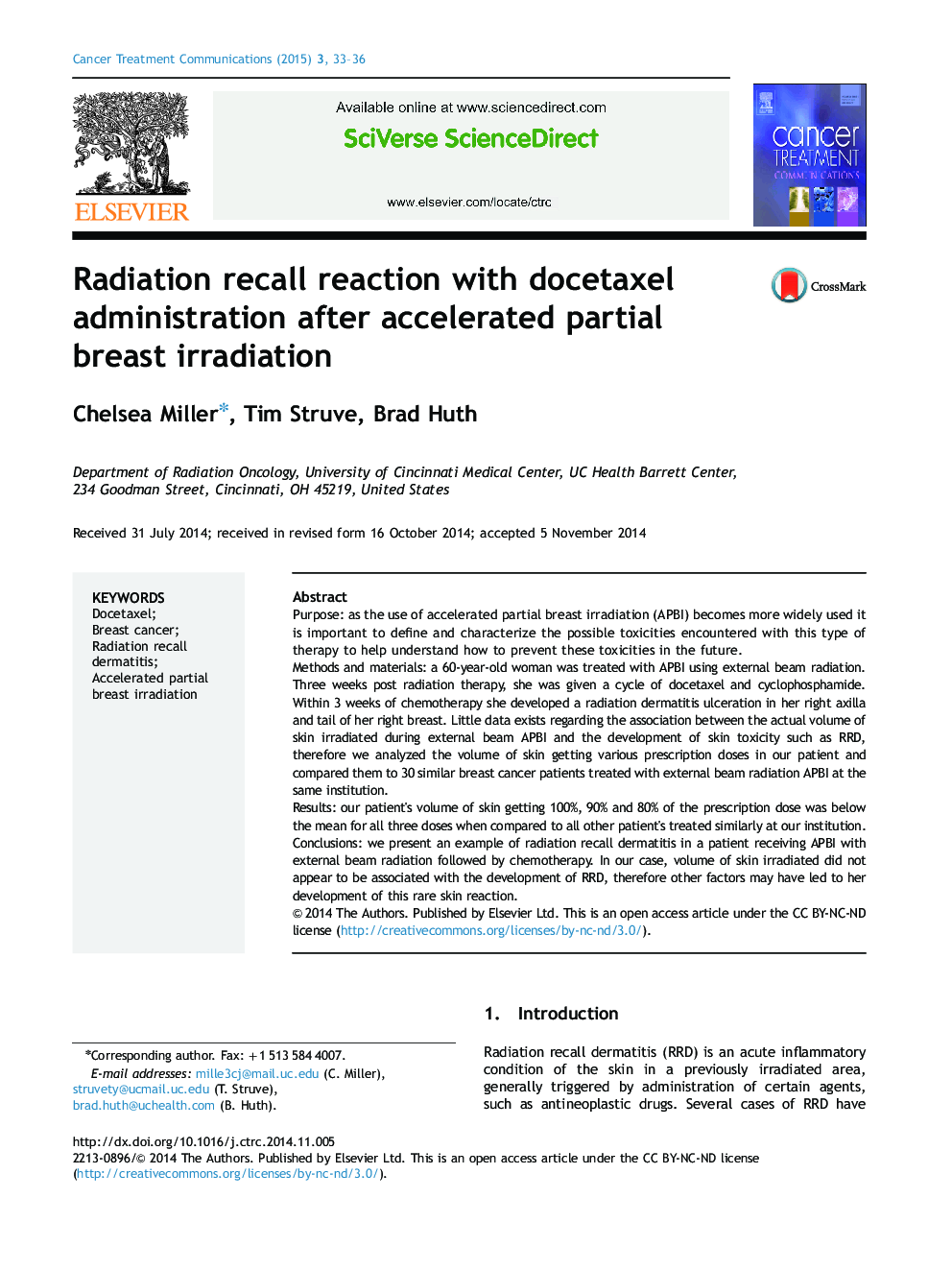| Article ID | Journal | Published Year | Pages | File Type |
|---|---|---|---|---|
| 3979681 | Cancer Treatment Communications | 2015 | 4 Pages |
Purpose: as the use of accelerated partial breast irradiation (APBI) becomes more widely used it is important to define and characterize the possible toxicities encountered with this type of therapy to help understand how to prevent these toxicities in the future.Methods and materials: a 60-year-old woman was treated with APBI using external beam radiation. Three weeks post radiation therapy, she was given a cycle of docetaxel and cyclophosphamide. Within 3 weeks of chemotherapy she developed a radiation dermatitis ulceration in her right axilla and tail of her right breast. Little data exists regarding the association between the actual volume of skin irradiated during external beam APBI and the development of skin toxicity such as RRD, therefore we analyzed the volume of skin getting various prescription doses in our patient and compared them to 30 similar breast cancer patients treated with external beam radiation APBI at the same institution.Results: our patient׳s volume of skin getting 100%, 90% and 80% of the prescription dose was below the mean for all three doses when compared to all other patient׳s treated similarly at our institution.Conclusions: we present an example of radiation recall dermatitis in a patient receiving APBI with external beam radiation followed by chemotherapy. In our case, volume of skin irradiated did not appear to be associated with the development of RRD, therefore other factors may have led to her development of this rare skin reaction.
